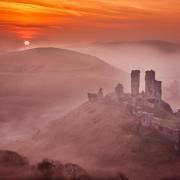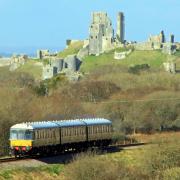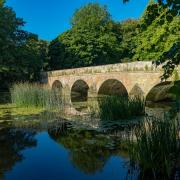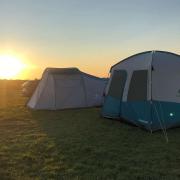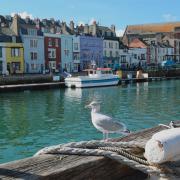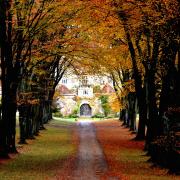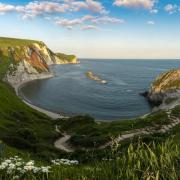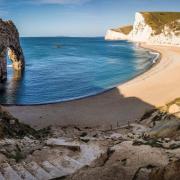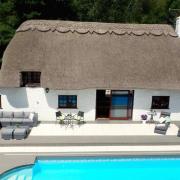Ferndown...past
In 1880 the stretch of heathland known as Fern Down did not warrant a mention in the Kelly’s Dorset Directory. Some 15 years later, in 1895, it merits a brief postscript to Hampreston, in whose parish it lay. There are five ‘cowkeepers’, a handful of nurserymen, and Dyke & Mullins – a general store supplying everything the handful of largely self-sufficient cottages on the heath might need for their smallholdings.
By 1911 they had been joined by PC Herbert Vacher, two grocers, a baker, and cycle agent. Fred Ellis pulled pints at the Pure Drop Inn. Teresa ‘Governess’ Travett instructed her infant charges in the 3Rs in the newly built Elementary School, and Emma Penny took in laundry at her cottage near the crossroads in the centre of the village – an area now known as Penny’s Hill.
One of the nurserymen was David Stewart, whose 1907 letterhead describes them as ‘Contractors to the Admiralty, the War Office, and H.M. Commissioner for Woods and Forests’. His descendants own two large garden centres in Dorset (Stewarts Christchurch Garden Centre and Stewarts Broomhill Garden Centre) and another over the border in Hampshire.
Ferndown’s only industry at that time was a brick works, located on Wimborne Road. The site is now occupied by the sprawling Fendown Industrial Estate.
In due course the Salisbury and Dorset Junction Railway acknowledged its growth by adding ‘For Ferndown’ to it West Moors Station signboard. Its future was finally assured by the opening of a route to Bournemouth by the building of a bridge over the River Stour at West Parley – a crossing previously reliant on a rope ferry.
However, it took Ferndown until 1977 to acquire civic status as a fully-fledged town; one of the few people to actually be born in Ferndown, Robin Spencer, became its first mayor. By then, the last of the old cob and thatch cottages had been demolished, and the distinctive double hedges preventing cattle straying had all been grubbed out in favour of new avenues and roads. Ironically, Hampreston remains a small rural village, whilst Ferndown is now Dorset’s fifth largest town, with a population of over 27,000.

Ferndown ...present
Knoll Gardens: These gardens at Hampreston are the lifework of RHS Chelsea Gold medallist, Neil Lucas. The stunning ornamental grasses, for which Knoll is renowned, are seamlessly interwoven with perennials and bulbs. knollgardens.co.uk
Go Wild: Moors Valley Country Park and Forest is managed for people and wildlife; explore its 1000 acres via play trails, cycling routes, Go Ape tree top adventure and Hawk Walks. moors-valley.co.uk
Blueberries: The Trehane family introduced blueberry plants to the UK in 1949 and established the first commercial blueberry plantations in Dorset as the Canadian plants thrived in Ferndown’s heathland soil. trehanenursery.co.uk




